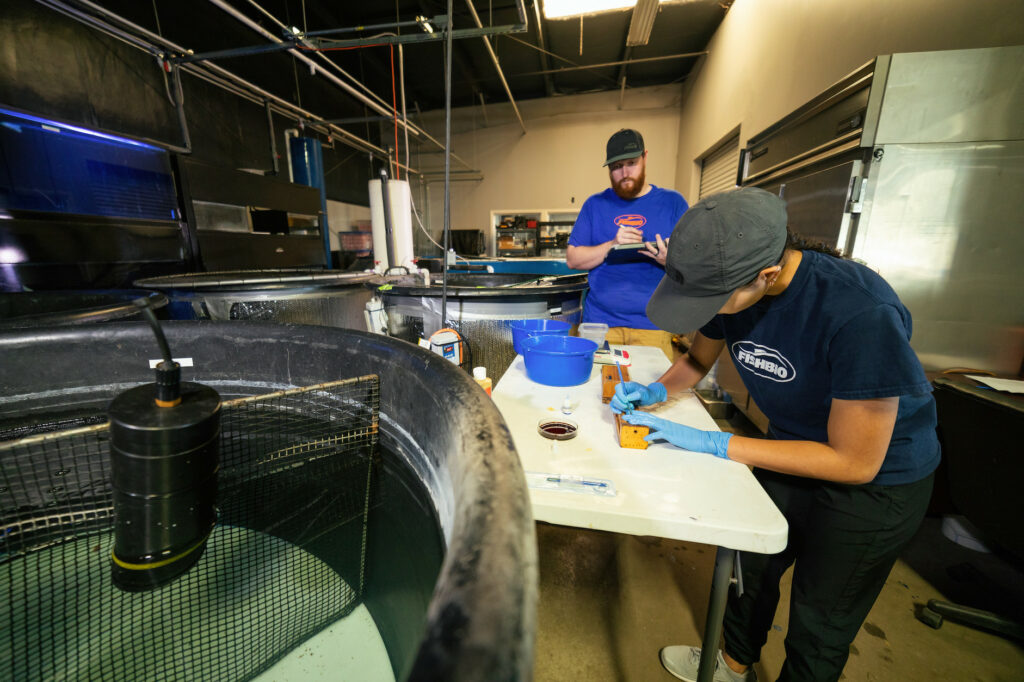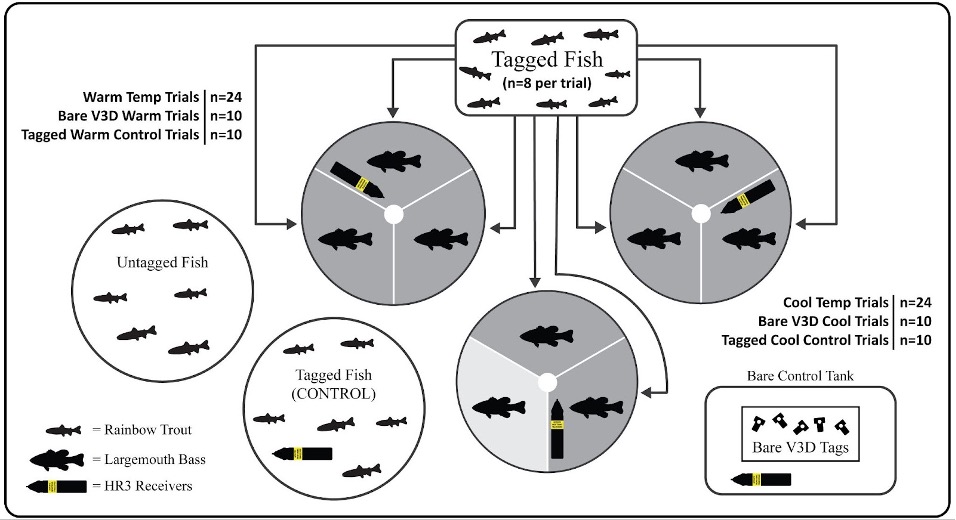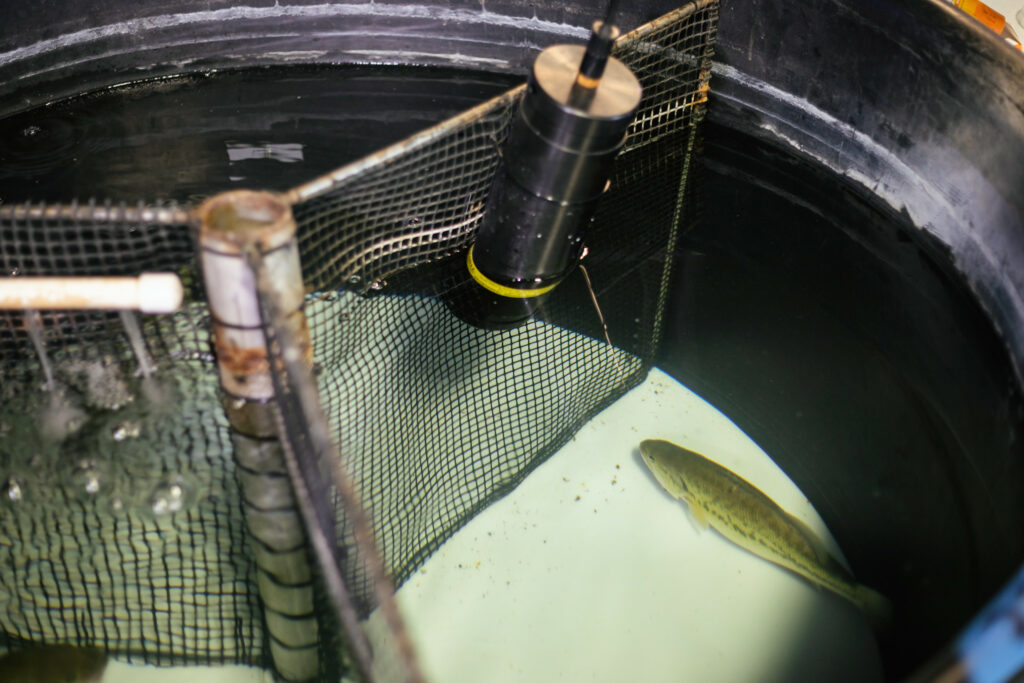Monday July 18, 2022

The migration of juvenile Chinook salmon through the Sacramento–San Joaquin River Delta to reach the ocean is arguable the most intensively studied life-stage of salmon in California. These young salmon face many threats to their survival, from habitat fragmentation and water diversions, to warming temperatures and hungry predators. Studies monitoring smolt movement with acoustic telemetry indicate that survival through the Delta is very low, but pinpointing the exact reason for smolt mortality – whether it be environmental conditions, predation, or other factors – has been an ongoing challenge for scientists. Recently, FISHBIO collaborated with Innovasea/Vemco to test the efficacy of one of the newest tools for studying this question: the latest version of the V3D predation transmitter (Innovasea, Halifax, Canada). These small tags, weighing only 0.33 g in air and measuring 15.5 mm in length with a diameter of 4 mm, contain a specialized polymer trigger that degrades upon exposure to a predator’s stomach acid. When the polymer is eroded, the unique identification number emitted by the tag changes to alert researchers that the tag is now tracking the movements of the predator fish that has consumed a tagged smolt. Experiments conducted in FISHBIO’s fish lab confirmed that the tag triggered consistently after predation events, and triggered more quickly in warmer water.

As part of the experimental trials, largemouth bass (Micropterus salmoides) served as the predator species and were fed rainbow trout (Oncorhynchus mykiss) tagged with the V3D tag during six weeks of feeding trials (Figure 1). A group of tagged rainbow trout was held separately as a control group to study surgery survival, tag retention, and false switching of the transmitter. To better understand the effect of temperature on trigger rates, feeding trials were performed at two temperatures (18.5 oC and 23.5 oC). Video monitoring of the tanks housing predators allowed us to document the actual time of each predation event, while simultaneous acoustic monitoring using the Innovasea HR3 acoustic receiver recorded when the consumed V3D transmitter switched its unique ID, signaling that the predation event had taken place.

In the feeding trials, we observed that 100% of the tags triggered after being consumed. The median trigger time was about 6 hours after predation events in the warmer temperature regime, presumably due to faster metabolic rates than in the cooler water trials, where the median trigger time was about 14 hours. In order for V3D tags to serve their intended purpose, it is important for researchers to detect a predator while it is still carrying the transmitter. We observed that most largemouth bass retained the V3D tags around 200 hours (just over 8 days) before expelling them by defecation or regurgitation.

Based on these initial findings, we are optimistic about the utility of this novel acoustic technology, which is currently commercially available. Given the observed tag retention times in predators, these transmitters will likely be most applicable in telemetry studies with localized research questions, such as at water diversions or fish passage structures, mass release sites such as those used in hatchery production, or fine-scale monitoring arrays in relatively short reaches. This technology serves as a milestone for informing management and conservation progress by providing scientists the ability to directly measure the effect of predation in salmonid survival studies. The full study report can be found on our website, and results were also presented at the recent American Fisheries Society Cal-Neva Meeting in Folsom, California.
This post was featured in our weekly e-newsletter, the Fish Report. You can subscribe to the Fish Report here.
